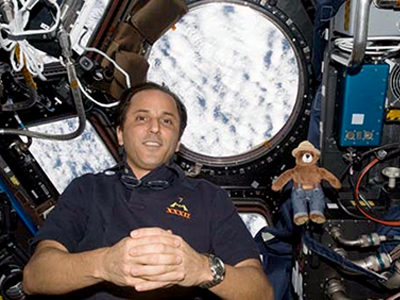In Today’s Deep Space Extra… NASA’s Kennedy Space Center remains closed as storm damage assessments continue. NASA educator astronaut Joe Acaba embarked on his third spaceflight this week.
Human Space Exploration
Kennedy Space Center remains closed after hurricane
Space News (9/13): NASA’s Florida space launch complex will remain closed at least through Thursday, as assessments from damage attributed to Hurricane Irma continue.
In Photos: Hurricane Irma damage at NASA’s Kennedy Space Center
Space.com (9/13): Photos from an aerial survey of NASA’s Kennedy Space Center following Hurricane Irma reveal the storm’s impact.
Puerto Rican astronaut Joseph Acabá embarks on third trip into space
Orlando Sentinel (9/13): Puerto Rican native and NASA astronaut Joseph Acaba reached the International Space Station late Tuesday with colleagues from the U.S. and Russia. Acaba is a former teacher, geologist and U.S. Peace Corps member. Acaba, NASA’s Mark Vande Hei and Russia’s Alexander Misurkin trained for a five and a half month stay prior to their launch aboard Russia’s Soyuz MS-06.
Space Science
Cassini’s death dive will protect 2 possibly life-supporting Saturn moons
Space.com (9/13): Low on maneuvering fuel, the NASA-led, nuclear powered Cassini spacecraft will carry out a mission ending plummet into giant Saturn on Friday. Why not allow the spacecraft, now 13 years at Saturn and counting, just operate until it’s out of fuel? An uncontrolled mission end might send spacecraft debris onto the moons Enceladus and Titan, both candidates for possible habitable environments. Sparing the two preserves an opportunity to explore Titan and Enceladus further without a concern over terrestrial contamination.
Cassini’s 13 greatest discoveries during its 13 years at Saturn
Space.com (9/13): Those many years of discovery range from a pair of potentially habitable moons, Titan and Enceladus, to pop culture symbols.
Objects destabilized by Jupiter or Saturn may have first brought water to Earth
Seeker (9/13): Computer simulations suggest the Earth’s water was “seeded” by planetesimals, small planetary bodies that resided in the asteroid belt and just beyond. They received “gravitational kicks” from giant Jupiter and Saturn that directed them towards the Earth during the early solar system.
Other News
A Pioneering NASA Administrator
Air & Space Magazine (9/13): A look at the Pioneer Doctrine espoused by U.S. Rep Jim Bridenstine, of Oklahoma, President Trump’s choice to lead NASA. The doctrine’s principles include an expanding human influence across the solar system, a commitment to be among the first to reach new destinations and prepare them for use and future development by others.
NASA nominee Jim Bridenstine has bold vision for space, unclear intentions for science
American Institute of Physics (9/7): Rep. Bridenstine recently promoted an ambitious vision for space policy reform that would shift NASA’s focus away from scientific research in favor of human space exploration and the development of space-based infrastructure. However, one area where his intentions remain opaque is toward NASA’s almost $6 billion portfolio for scientific research.
Big launch companies predict doom for upcoming smallsat launchers
Coalition Member in the News (United Launch Alliance)
Space News (9/13): Executives from major launch services companies predict difficult market futures for emerging small satellite launch services providers. Executives from Arianespace, ILS, SpaceX and United Launch Alliance were among those who spoke on the topic at the World Satellite Business Week in Paris.
Fully automated satellite-assembly lines? Not quite yet
Space News (9/13): Because of relative low production, the assembly of satellites is likely to remain a largely human, rather than robotic activity — at least for the near term.

